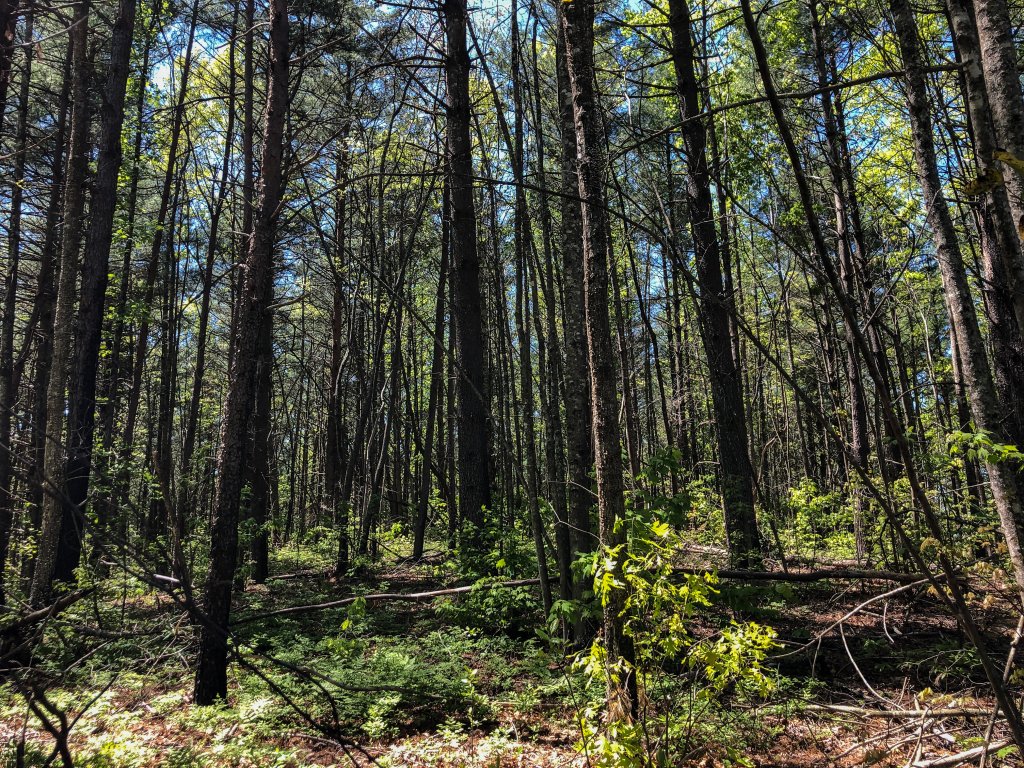In January, we posted about the upcoming White Pine Management Project in the Andrew Pickens Ranger District. Recently, the official Scoping Notice and Proposed Action for this project were released.
Comments are due by May 8, 2019. Send comments to District Ranger, 112 Andrew Pickens Circle, Mountain Rest, SC 29664 or comments-southern-francismarion-sumter-andrewpickens@fs.fed.us.

The Andrew Pickens Ranger District is proposing to harvest 66 stands of Eastern white pine on approximately 2,148 acres. The tree-cutting would be followed by herbicides, prescribed burning, chipping, and/or planting. Even-age timber harvests of clear-cuts “with reserves” are proposed for 1,487 acres. Uneven-age timber harvests of group selections and thinning are proposed for 661 acres.
The White Pine Management Project would impact popular recreation areas used by the public for horseback riding, mountain biking, hiking and scenic enjoyment. It would also affect streams, rare stands of old growth timber, and adjacent private landowners.
- See the Chattooga Conservancy’s new interactive map at chattoogariver.org/map .
This map shows Forest Service proposals and projects in the entire Chattooga River watershed including the White Pine Management Proposal, Loblolly Removal Project, Southside Project and more. Check out the areas being targeted by the White Pine proposal.
White Pine Management Scoping Notice TALKING POINTS
Thinning & Benign Neglect–Recent studies conducted by scientists at the Forest Service’s Pacific Northwest Research Station suggest that the best way to manage pine plantations is to use thinning harvests. Thinning may be appropriate to accelerate native forest restoration, where roads are already present and where view sheds and critical habitats are not harmed. In areas where tree-harvesting would result in significant negative effects due to stream crossings, road building or impacts to view-sheds and native habitats, the best management would be benign neglect, i.e., leave the trees alone and let nature heal itself.
Further, it’s important to note that many of the proposed harvest areas for the White Pine Project such as 50-year-old stands have native trees and shrubs that are naturally occurring and already growing in the understory. Cutting the whole stand or most of it as per the Forest Service’s proposal would set the natural regeneration in these stands back by 50 years (or the age of the stand), whereas thinning could speed up native forest restoration.
Areas for Benign Neglect The Carlson Old Growth Study (produced by the Forest Service in 1995) found very little old growth in the project area—except at Swafford Creek, Sandy Ford Road, Mongold Gap, Big and Little Stakey Mountains near Orr Mill Road, and Ira Branch near the Chattooga Wild & Scenic Corridor. All of these old growth areas are contiguous with or near the proposed timber harvests. These rare old growth stands should be surrounded by a connected network of intact native forests, not a clear-cut landscape.
Areas that should be left alone include: John Mountain at Swafford Creek, because of its proximity to old growth and the new roads and riparian area crossings that would be needed for access; Sandy Ford for its proximity to old growth, steep slopes and connectivity to the Chattooga Wild & Scenic River Corridor; and, Round Mountain due to the extreme use of road building, and because the proposed tree-cutting would destroy one of the most iconic views in the watershed. There are certainly other areas that need to be allowed to regenerate naturally, that should be reanalyzed.
Biological Evaluations Need to Be Completed First The White Pine Management Project does not provide the public with a “biological evaluation” that identifies important information about what is in each stand. This puts the cart before the horse. Many forest stands proposed for harvest in the White Pine Management Project may contain rare, threatened or endangered plants, animals and critical habitat. The public should not be asked to comment or check off on proposed timber projects without knowing important details about what is in each stand.
Erosion & Sedimentation–A Forest Service study by Dr. Van Lear at Clemson University concluded that the greatest source of erosion and sedimentation in the Chattooga River watershed is from Forest Service roads and associated activities. The White Pine Management Project involves building 10 miles of new “temporary roads” and a large amount of ground-disturbing activity, that undoubtedly would cause much erosion and sedimentation.
Climate Change–An essential component to address climate change is restoring a connected network of forests across the landscape that would include all native old growth stands, joined by forests managed as connecting corridors for restoring old-growth characteristics. One of the best opportunities to fight climate change is to manage our national forests to provide migratory corridors for plants and animals to shift northward and to higher elevations as temperatures rise as a result of climate change. Preserving and restoring native old-growth forests will also help mitigate climate change because these forests store large amounts of carbon that otherwise would be released as CO2 emissions if harvested, which is a prime cause of global warming.
The International Panel of Scientists urges all nations to address climate change as a matter of top priority. The White Pine Management Project proposed by the Forest Service does not address this serious issue. In fact, the heavy-handed “crop tree management” in the proposal, which features clear-cutting and intensive forest management practices, would destroy many of the areas that need to managed for old growth restoration and connectivity across the landscape, to combat climate change.
For these reasons, the Forest Service should work with the public to redesign the White Pine Management Project to include the considerations as outlined above, and withdraw the project as currently proposed.

